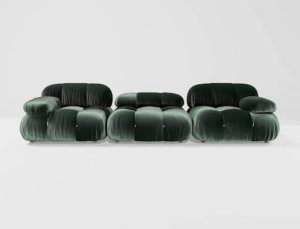How 3D tools can help your go-to-market strategy

A product design rendering created by the author.
In our fast-paced world, efficiency is key. 3D tools can be pivotal in streamlining and accelerating the go-to-market process and providing an edge to those willing to embrace them. They enable rapid prototyping, enhance collaboration, create beautiful visualizations for marketing, and can revolutionize your supply chain. In utilizing these tools, you not only speed up your time-to-market, but also gain an edge and a sense of ease in marketing your products.
Here’s how you can leverage 3D tools to transform your go-to-market strategy and marketing efforts.
Accelerating prototyping
The first step in your product’s journey from concept to consumer is rapid prototyping. Design tools like Fusion 360 or Blender can drastically reduce the time and cost associated with physical prototyping. When you create detailed digital models, you can use them to quickly iterate design concepts, experiment with various materials, and conduct myriad tests virtually. This immediate feedback loop allows for refinement without the overhead of manufacturing, which in turn enables a faster transition from design to production.
Collaboration
3D models also revolutionize collaboration. By creating a product in a 3D space from the outset, designers can effortlessly share their work with collaborators for immediate and clear feedback. This is akin to editing a document in real-time with Google Docs, as opposed to the painstaking back-and-forth of other methods.
High-resolution textures and exact dimensions can be shared with manufacturers and stakeholders, eliminating misunderstandings, and ensuring everyone shares the same vision for the final product. Using 3D tools, this vision can provide the blueprint to visualizations as well — and accelerate your marketing efforts while doing so.

Vision to visualization
Visualization can help not only with designing, but also with marketing. The creation of 3D assets allows for promotional materials to be created and generate buzz well before your product launches. This is a huge advantage in and of itself.
However, the use of 3D models also enables the use of emerging technologies like augmented reality (AR), which allow customers to virtually place products in their own space. This ensures fit and aesthetics before purchase and reduces buyer’s remorse and returns. Virtual reality (VR) takes this a step further by immersing potential customers into an environment and enabling virtual showrooms or interactive demonstrations.
Even if AR and VR hold no intrigue for you or your potential customers, you can create captivating visuals like rotating 3D GIFs for social media platforms and increase engagement without the need for a specialized physical setup.
Inventory and the Earth
3D tools can also impact your inventory management and your company’s carbon footprint. You can create products on-demand using 3D printing and maintain a much leaner inventory, reducing waste as a result. This, in turn, speeds up your supply chain and appeals to environmentally conscious consumers.
Learn Blender with Studio 45
If you’re looking to get hands-on with incorporating 3D tools into your GTM strategy, and you happen to be in or around San Francisco, Studio 45 is developing a Blender Basics class! If you’re interested in taking this class or have suggestions on what skills we should teach, please fill out this form.
informal is a freelance collective for the most talented independent professionals in hardware and hardtech. Whether you’re looking for a single contractor, a full-time employee, or an entire team of professionals to work on everything from product development to go-to-market, informal has the perfect collection of people for the job.